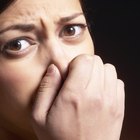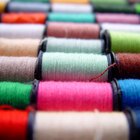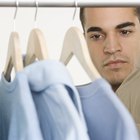Types of Fabric Softeners
Fabric softeners come in liquid form, which can be placed inside the washing machine while the clothes are washed with detergent; or they can come in fabric softener dryer sheets, which are placed in the dryer as your clothes are dried. There are many different brands of fabric softeners on the market that come in many different scents. In addition, some fabric softeners are "green" meaning they use no harmful chemicals and are considered to be the safest for the environment.
Purpose of Fabric Softeners
Fabric softeners are added to your laundry in order to reduce the negative charge disseminated into your laundry by the detergent. Fabric softeners give the laundry a positive charge to eliminate static on your clothes, and in addition they coat your clothing fibers with a thin film to make them fluffier, softer and better smelling.
There are many different brands of fabric softeners. Most of them have the same chemical components and function the same way. However, many of the "greener" products on the market may cost more because they are using all-natural ingredients. Typically liquid fabric softener will cost between $3 and $7 for a 32 ounce jug, and fabric softener sheets will cost between $1.50 and $5 for about 100 sheets.
Effects of Fabric Softeners
There is some evidence to suggest that the overuse of fabric softeners can lead to cancer and environmental damage. The chemicals used in fabric softener dryer sheets and liquid fabric softener cling to the fibers of your clothes and your skin, making them readily available for you to breathe in. These same binding chemicals are believed to have the same effects on the lungs and many recent studies suggest that it may lead to the development of various cancers. In addition, the particles eliminated through the dryer vent carry out into the local environment and can lead to similar issues with your surroundings.
Many detergent and fabric softener companies are now creating products that are made from all-natural materials and have little to no impact on the local environment.
Related Articles

The Flammability of Fabric Softeners

What Ingredients Are in Detergent?

Difference Between Soap & Synthetic ...

Health Benefits of Organic Foods Vs. ...

How to Get Rid of Static Electricity in ...

List of Biodegradable, Every Day ...

How to Remove Ink From Nylon

What Is Dye Made From?

What Is the Durability of Bamboo Fabric?

What Is a Synthetic Polyester Fabric?

Why Do White Clothes Turn Yellow in ...

The Disadvantages of Deodorants

How to Care for Sorel Boot Liners

How to Get Rid of the Odd Smell in a ...

Purpose of Moth Balls

The Disadvantages of Polyester Cotton

Heating Foods in Plastic & BPA

What Are the Benefits of Clay Body ...

How to Prevent Fabric Dry Rot

What Is Clear Liquid Coconut Oil?
References
Writer Bio
Lauren Farrelly has been writing and producing for television since 2003. She has experience covering sports, business news and general news events for CNBC, ESPN and Bleacher Report. Farrelly has a BA in broadcast journalism from Arizona State University.